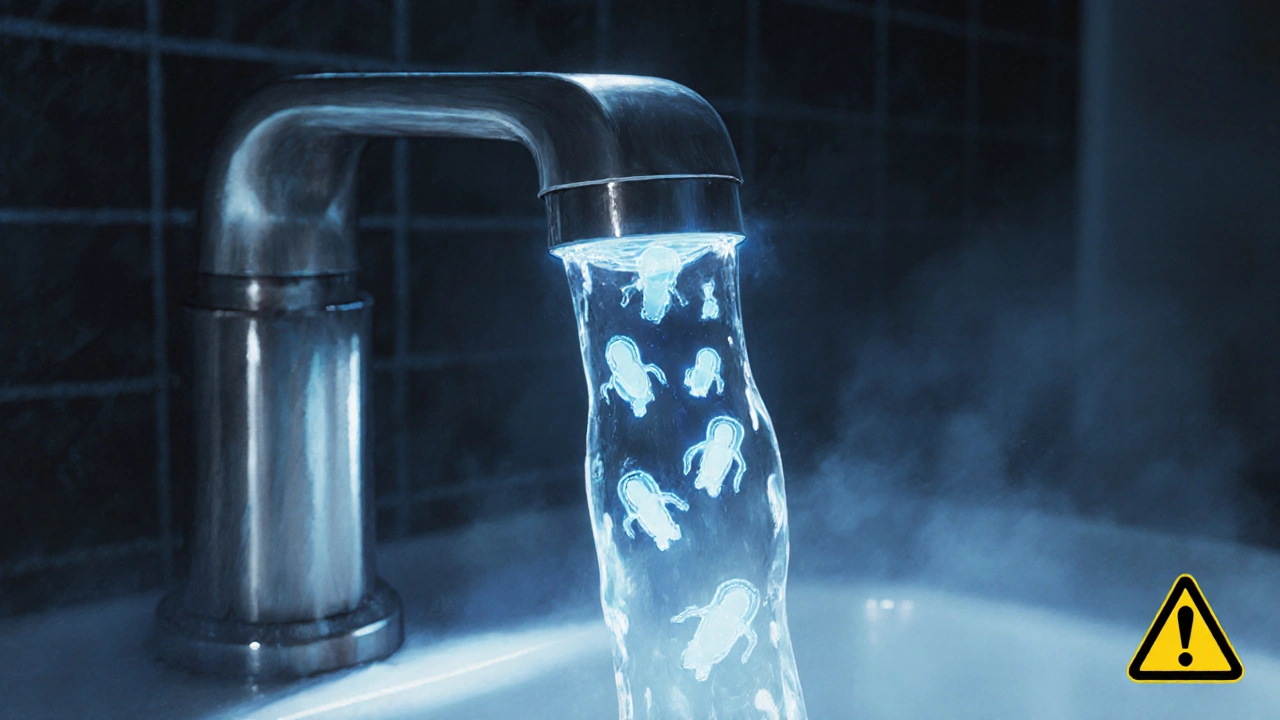
Amoeba Infections in Drinking Water: Risks, Symptoms & Prevention
Learn how hidden amoeba infections threaten water supplies, the diseases they cause, early symptoms, and practical steps to keep your tap water safe.
When people hear brain-eating amoeba, a rare but deadly microorganism that causes a fatal brain infection. Also known as Naegleria fowleri, it doesn't actually "eat" your brain like a zombie movie—instead, it travels up your nose, attacks brain tissue, and triggers severe inflammation. This isn't a common threat, but when it happens, it’s fast, serious, and often fatal. Most cases happen in warm freshwater lakes, rivers, or hot springs, especially in summer months when water temperatures rise above 80°F.
The Naegleria fowleri, a free-living amoeba found naturally in warm freshwater environments. Also known as PAM-causing organism, it thrives in places where people swim, dive, or splash around—like lakes in Texas, Florida, or Arizona. It doesn’t spread through drinking water or person-to-person contact. You only get infected if water containing the amoeba goes up your nose. That’s why it’s rare: most people don’t force water deep into their nasal passages. But activities like diving, water skiing, or even using a neti pot with unfiltered tap water can put you at risk.
Many confuse this with other waterborne illnesses, but primary amoebic meningoencephalitis, the specific brain infection caused by Naegleria fowleri. Also known as PAM, it’s not meningitis or encephalitis from viruses or bacteria—it’s a distinct, aggressive attack on the central nervous system. Symptoms start like the flu—headache, fever, nausea—then quickly turn to stiff neck, confusion, seizures, and coma. There’s no reliable cure yet, and survival is extremely rare. That’s why prevention matters more than treatment.
So what can you actually do? Avoid swimming in warm, still freshwater during heatwaves. If you do, keep your head above water or use nose clips. Never use tap water in neti pots unless it’s boiled, filtered, or distilled. Public health agencies track outbreaks, and local warnings are often posted when risks rise. You don’t need to avoid water altogether—just be smart about where and how you use it.
Below, you’ll find real, practical guides that connect this rare threat to everyday health choices. Some posts talk about how medications interact with your body’s defenses, how to monitor risks from supplements, or how to handle infections safely. While none of them mention the amoeba directly, they all help you think smarter about your health—whether you’re managing a chronic condition or just trying to stay safe in the water.

Learn how hidden amoeba infections threaten water supplies, the diseases they cause, early symptoms, and practical steps to keep your tap water safe.